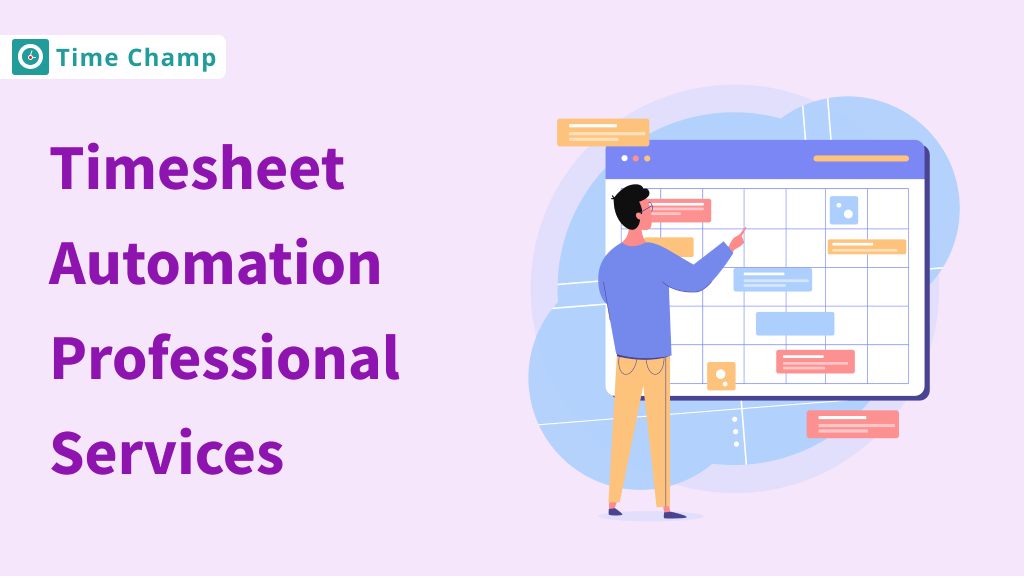Managing time effectively can make or break productivity. Time-tracking tools promise to streamline your day and enhance efficiency, but they also come with challenges. In this article, we’ll dive into the most significant pros and cons of time tracking, helping you determine if it’s the right strategy to optimize your time management.
What is Time Tracking?
Time tracking is the act of measuring how time is spent on different tasks and activities. In workplaces, it helps managers understand productivity levels, project management, and billing. Tracking time, whether manually or with the help of a special tool, is useful to know where time is spent, and thus, to increase productivity, and make the right decisions.
Pros of Time Tracking: How It Can Transform Your Workflow
Here are the main benefits of time tracking that can help you change your workflow, improve productivity, and effectiveness.
1. Provides Accurate Project Budgeting and Cost Management
When you record the time spent on each task, you can determine the actual cost of a project. This detailed data rules out rough estimates and provides a better budget. Real-time tracking enables you to monitor the expenses against the budget, make corrections in time, and improve the financial situation. This accuracy assists in the cost management of your projects by ensuring that the resources are properly utilized, and the costs are well managed.
2. Allows Better Time Allocation and Prioritization
The other benefit of time-tracking is that it helps enhance time management and prioritization. By tracking time, you can see which tasks and projects consume most of your employees’ time and adjust if needed. This insight assists in the identification of the right priorities so that the important work is done in the right manner and within the right time. It also helps in workload management and fatigue control since it helps to redistribute workloads as needed.
3. Identifies and Addresses Time-Wasting Activities
Tracking time allows you to identify and eliminate activities that may be unproductive and take up a lot of your time. When you look at the time logs, you can pinpoint areas where time is being consumed inefficiently and take steps to streamline them. This insight helps you to make corrections such as optimizing work processes, removing unnecessary steps, or enhancing time management techniques. Reducing time wastage results in increased efficiency as you can work on activities relevant to the goals and objectives and improve overall productivity.
4. Delivers Data-Driven Performance Insights
One of the key benefits of time tracking is its ability to deliver data-driven performance insights. The analysis of time usage allows you to identify the time-wasting activities, assess the effectiveness of the work, and distribute the resources more effectively. This data is useful in setting realistic goals and improving productivity, where time is of the essence in the attainment of your objectives.
5. Enhances Productivity and Efficiency
It is a useful tool that gives you and your team concrete information about productivity. From the time records, you can easily identify areas where time is being spent and the efficiency of the spending. This data is useful in setting achievable targets, evaluating performance, and even finding out the gaps that need to be closed. With these insights, it is possible to make the right decisions on how to improve the flow of work, increase productivity, and get better results.
6. Improves Accountability and Transparency
By using time tracking, employees gain clarity on how their time is utilized, which enhances accountability and transparency. Detailed logs help individuals understand their productivity levels and ensure that their efforts are aligned with their responsibilities. This transparency supports self-management and promotes a fair work environment.
Cons of Time Tracking: Potential Pitfalls to Consider
Here are the drawbacks that you should expect. These cons indicate some of the issues that may be encountered and factors to bear in mind before going fully into the implementation of time tracking. It is important to consider these disadvantages to be prepared for any problems that may occur.
1. Increases Employee Stress and Pressure
The constant monitoring of every minute may lead to increased stress, as the employees may feel the need to constantly justify their productivity. This constant pressure can lead to burnout and a decrease in job satisfaction. However, it is crucial to ensure that the tracking is accurate and does not infringe on the employee’s well-being to foster a healthy working environment.
2. Risk of Micromanagement and Reduces Autonomy
The application of tracking time can result in a culture of micromanagement. There is also a risk that managers will be obsessed with the data generated by time-tracking tools and may start micromanaging employees. This can demoralize the employees and reduce their perceived self-organizational competence because they may feel that they are not trusted to be punctual. A lack of autonomy can stifle creativity and innovation, leaving employees feeling like they have little control over their work.
3. Requires Time-Consuming Implementation and Maintenance
A time-tracking system may take more time and effort to implement. Your organization requires software to be bought, people to be trained, and processes to be put in place for tracking activities. Also, the system’s maintenance is an issue because it must be updated and checked for accuracy frequently. This time and resource commitment can detract from other important business activities.
4. Raises Privacy Concerns and Intrusiveness
It can raise privacy concerns and be perceived as intrusive by employees. The detailed monitoring of work hours and activities might lead to feelings of being constantly watched, potentially affecting morale and trust. Employees may worry about how their data is used and whether their time or non-work-related activities are being scrutinized. Addressing these concerns requires implementing clear policies, ensuring data security, and maintaining open communication to balance effective tracking with respect for individual privacy.
5. Presents Risk of Overemphasis on Tracking Over Outcomes
The difficulty that may be linked to monitoring is that it may result in more focus on the hours spent as opposed to the outcome. The issue with the time spent is that it is very easy to forget about the goal and end up with a list of activities instead of work. This shift can lead to a situation where people are more concerned with meeting time-bound targets than with accomplishing important goals and producing quality work. This is why it is important to consider both efficiency and effectiveness, not just concentrate on the monitoring aspect.
6. Leads to a Possible Decrease in Creativity and Flexibility
It may also reduce employees’ creativity and flexibility. If they are always worried about the time, it becomes even harder to try out something new or switch tactics. Creativity in general requires some freedom and flexibility, which can be tough to maintain under strict time constraints.
What Are the Different Ways of Time Tracking?
Now let us look at the various approaches that can be used. These approaches may be simple or complex and may be effective to different extents and knowing about them will assist you in making the right decision.
The three primary methods for tracking time are:
1. Manual Time Logs
Manual time logs refer to the process whereby employees write down their working hours in a book or on paper, most preferably in the format of a timetable. This method is very simple and easy to implement and therefore ideal for small businesses, freelancers, and contractors who do not want to use complex tools. But it can be time-consuming and error-prone at the same time. However, it is a very basic system that entails a lot of manual work and is not very accurate for tracking time.
2. Timesheets
Timesheets are more formal than other forms of tracking since they enable employees to record the time they began and completed a particular task or project. These can be in paper form or electronic formats such as Excel. Timesheets are employed in medium-sized organizations and administrative settings where there is a need for a formal recording system. The use of digital timesheets is more advantageous because it eliminates the need for manual calculations and storage of data. However, they still require manual data inputting, which is time-consuming and prone to mistakes, and do not offer real-time monitoring or efficiency analytics. Managers are usually given timesheets at the end of the day or week, and this makes it difficult to track performance in real time.
3. Time Tracking Software
Time-tracking is used to replace the traditional timesheets as it is more efficient. These time tracking tools track work in real-time, generate detailed reports, and often include features like invoicing, productivity tracking, and attendance monitoring. Additionally, time-tracking software offers automated timesheet management, reducing manual data entry and minimizing errors. Tracking software is common in large companies, distributed teams, and tech-oriented businesses that need accurate and up-to-date information about employees’ productivity and project status. It is a preferred method of tracking time since it eliminates manual work and chances of making mistakes as compared to other methods.
The Optimal Method for Tracking Time
If you need a time tracking and productivity tool, there is no better option than Time Champ. Time Champ is an all-in-one tracking solution that can be used to improve and optimize time management in different kinds of businesses. Below are the reasons why Time Champ is the best for today’s time-tracking requirements.
Time Tracking: It has features for time tracking that enable users to log their working hours most conveniently and easily. If you are handling several projects at once or if you need to give precise billing information, the real-time tracking of Time Champ will make sure that every minute is recorded. This level of detail is useful in record-keeping and in time management.
Attendance Tracking: The software also has the feature of recording the attendance of the employees, hence cutting down the time that the employees spend signing in and out and minimizing the mistakes that may be made. This feature is especially helpful when working with a remote team and when attendance information must be updated.
Productivity Tracking: Time Champ is useful in the evaluation of productivity because it shows how time is utilized in different activities and tasks. It produces reports that show the trends in productivity and assists the managers and the team leaders in comprehending the standards of performance and the adjustments that need to be made. Productivity measurement assists organizations in making the right decisions that will improve performance and meet the set goals. This feature helps the users manage their tasks, how to approach them, and even how to time them to produce the best results.
Activity Tracking: It records different activities and gives details on how time is spent on various activities. This feature helps users manage their tasks, plan how to approach them, and even manage their time to achieve the best results.
Conclusion
Thus, time tracking can increase productivity and reveal the areas of inefficiency, which makes it useful for both personal and team use. But it also poses the danger of micromanagement and increases stress levels. The idea is to use tracking time as a tool that will help rather than hinder the process. This way, users can decide whether tracking time is beneficial for them and improves their experience at work.
Ready to harness the power of time tracking without the hassle?
Discover how Time Champ can transform your team's performance.
SignUp for FreeBook DemoFrequently Asked Questions
It involves recording the time spent carrying out various tasks and activities. This can be done on paper with logs or with tracking software that logs data as it is being used and generates reports.
Time tracking is useful in controlling project costs, increasing efficiency, and keeping track of billing. It gives information on how time is used to ensure efficiency is achieved in resource use.
Time tracking gives information on the working patterns, the cost of the project, and the time spent on each activity. It assists in finding areas of wastage, tracking performance, and making decisions based on data.
IT, consulting, freelancing, and professional services are the industries that get the most out of time tracking since they require accurate billing, project tracking, and productivity measurements.




